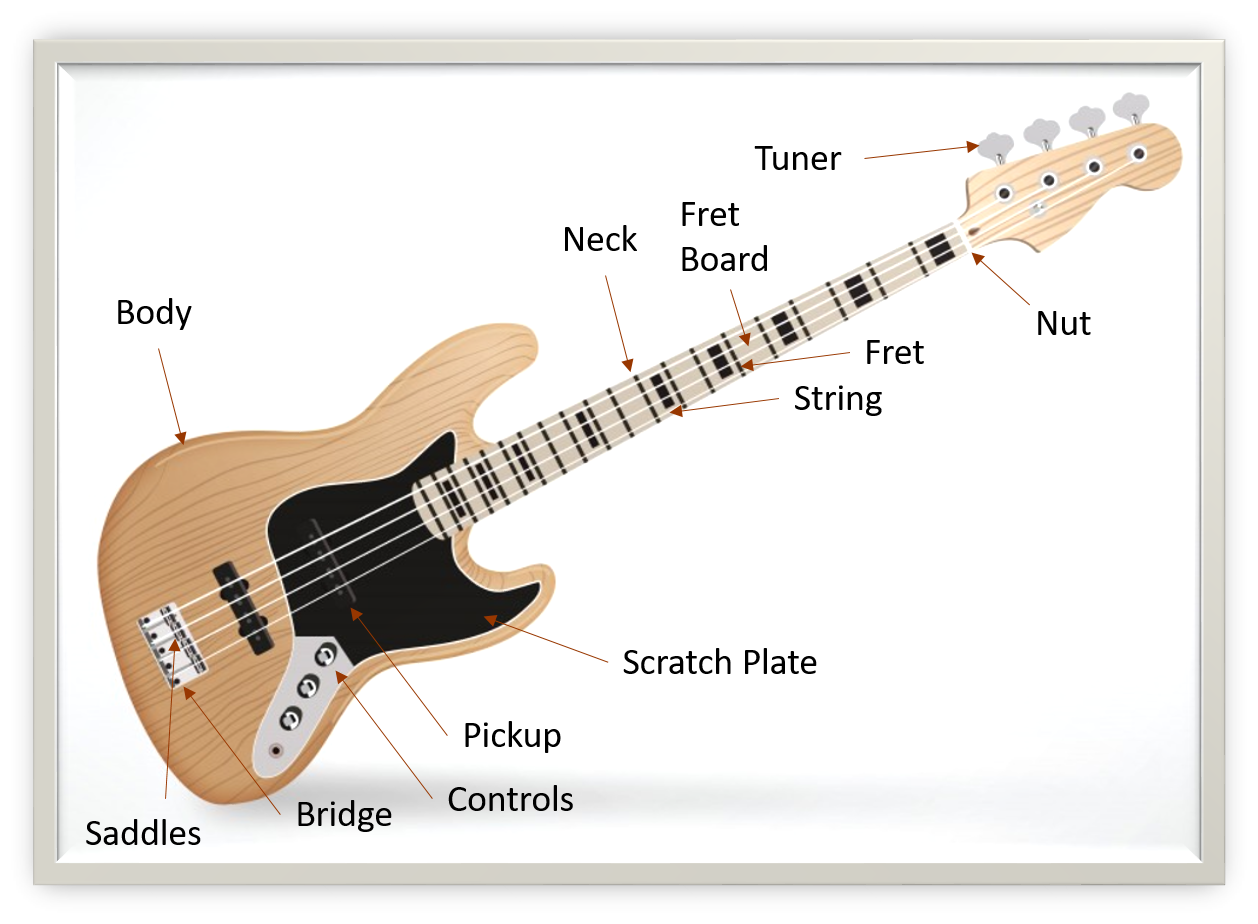| Body |
– |
The wide part of the bass that rests against your body and holds all the electrics |
| Scratch Plate |
– |
A plastic plate on the body that protects it from being damaged by your plucking hand (not always present) |
| Neck |
– |
The long thin part that your fretting hand uses to change the notes to be played |
| Fret-board |
– |
Covers the playing part of the neck and provides a surface for the fretting hand |
| Fret |
– |
Thin metal bars that make contact with the strings in specific places to accurately control the pitch of the notes played. These are not always present – hence some basses are “fretless” |
| String |
– |
The long metal wires that are stretched and plucked to make the sound. On a bass guitar these always consist of a central wire with another wire bound round the outside. The binding wire may be round (round wound) or flat (flat wound) the former creating a much more ringing sound. |
| Nut |
– |
Provides a fixed point at the end of the neck that the strings pass over to reach the tuners |
| Bridge |
– |
Provides a fixed point towards the end of the body that the strings pass over to reach their anchor points |
| Saddles |
– |
The part of the bridge that each string makes contact with, they are often adjustable to help the action (Height of the strings over the fret-board) and intonation (ensuring the strings play in tune all down the neck) |
| Tuner |
– |
Hold the strings in place at the end of the neck (usually) and allow the tension to be adjusted in order to tune the strings |
| Pickup |
– |
Transmit the sound of the strings to the output jack, the sound is influenced by the solid parts of the bass as well as the type of strings and how they are played. |
| Controls |
– |
Adjust the volume and tone of the sound on it’s way to the output. A variety of controls can be present including one or more volume adjusters, bass, treble, middle and blend controls to mix the output of the pickups. |

